Apiary Board Game Review
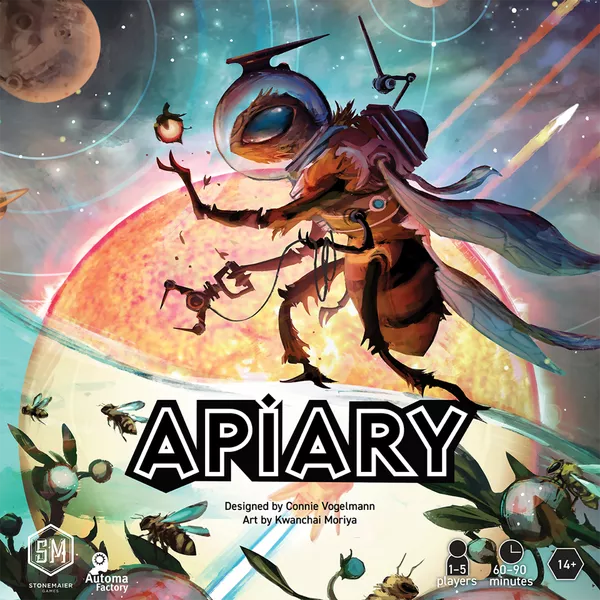
The Theme of Apiary
On a post-human earth, bees have risen to become the next sentient and dominant species. Eventually, they take to the stars, helping to improve ecosystems across the galaxy with the technology they’ve developed from the ruins of their human predecessors as well as their own innovations.
Personally, I’m neutral on the theme. I’ve seen some people lament online that they don’t like the “bees in space” theme and would have preferred a bee game based in reality. There’s actually a practical reason why Stonemaier Games decided to take the bees into space. With the existence of the game Honey Buzz, they wanted Apiary to have its own unique identity and not be regarded as just another bee game.
Jamey Stegmaier (Stonemaier Games co-founder/lead designer) asked Connie Vogelmann (Apiary creator) how she felt about taking the game into outer space with a Sci-Fi twist. As a fan of Science Fiction, she liked this idea and they went forward with it. The Sci-Fi twist also helped to explain some of the in-game mechanics they were having trouble explaining, such as the bees using technology.
I don’t get hung up on the minutia of how space bees might make sense in a board game. Maybe it’s because I’ve played so many video games and watched so many Sci-Fi shows in my life that I’m desensitized to crazy creatures and bizarre settings. I’m also not particularly attached to bees or beekeeping so I don’t look at this game as a way to reflect my real-world passion for those things.
Apiary is a Worker Placement Game
Something that feels bad when you’re playing worker placement games is when an opponent takes a space that you want, blocking you out of that option and possibly gaining an extra bonus from it. I’m sure we’ve all been there and it can leave a sour taste in your mouth.
Apiary eliminates those “I’m first” bonuses and gets around blocking by implementing a worker bumping mechanic. With bumping as an option, you will always get the space you want and you don’t need a special worker to get it as in some other games. There are even instances where having an opponent’s worker in a space actually makes your own placement stronger, allowing you to explore farther or buy tiles from more expensive columns.
You can even bump your own workers which adds some tactical depth to the game. I think that Apiary has superior worker placement mechanics compared to the other games I’ve played. This is my first “worker bumping” game and I’m really enjoying it.
Another concept that is new to me is the idea of workers “aging out” of circulation, something Apiary has employed in an interesting way. When a strength four worker is bumped or you recall one back to your landing pad, it immediately “hibernates” and is removed from play. You get to place a hibernation token in the hibernation comb section of the board which gives you various resources or points.
Having the most tokens in a section gives you bonus points at the end of the game. The hibernation comb acts as the game’s clock. When all the spaces are filled, or one player has placed all of their tokens, the game ends. All players get one more turn to bring their games to a close.

The Six Actions of Apiary
Explore
This is the resource gathering element of the game. You guide the Queen’s Ship around a grid, collecting exploration tokens and revealing new planets. You get to customize some of the resources you gain from a revealed planet so you are never fully at the mercy of the luck of the draw.
Advance
This is the action that allows you to build tiles to expand your hive. Three of the four types of tiles can be gained through Advance: Farms, Recruits, and Developments. Farms allow you to store more resources and they collect income when you recall workers. Recruits represent individual bees in your hive and they modify your actions with powerful effects. Developments give you powerful one-time boosts of points or resources.
Grow
The Grow action allows you to gain more workers and buy hive frames to expand your hive by adding more build spaces to it. Placing a strength four worker here will allow you to upgrade your faction ability as well.
Carve
This action is only available to strength four workers. It allows you to build powerful end-game scoring tiles. They take some preparation to build around so they can help set the theme for the game you play.
Convert
This action allows you to fine-tune your resources in a number of ways. You can discard cards from your hand for a new draw and exchange a basic resource for a different basic resource. This is also the primary way that you generate wax and honey which requires that you discard multiple basic resources.
Placing a strength four worker here allows you to create a Dance, which is a special conversion that has more powerful rewards and allows for some customization in what it costs to perform. Opponents who use this conversion option give the Dance’s creator Queen’s Favor.
Research
This action allows you to draw a number of cards equal to the strength of the worker placed there. You only get to keep one card though. If you place a strength four worker here you can “plant” a card from your hand. Planting a card unlocks its ability to score end-game points by meeting certain conditions. They behave like Carve tiles in this regard.
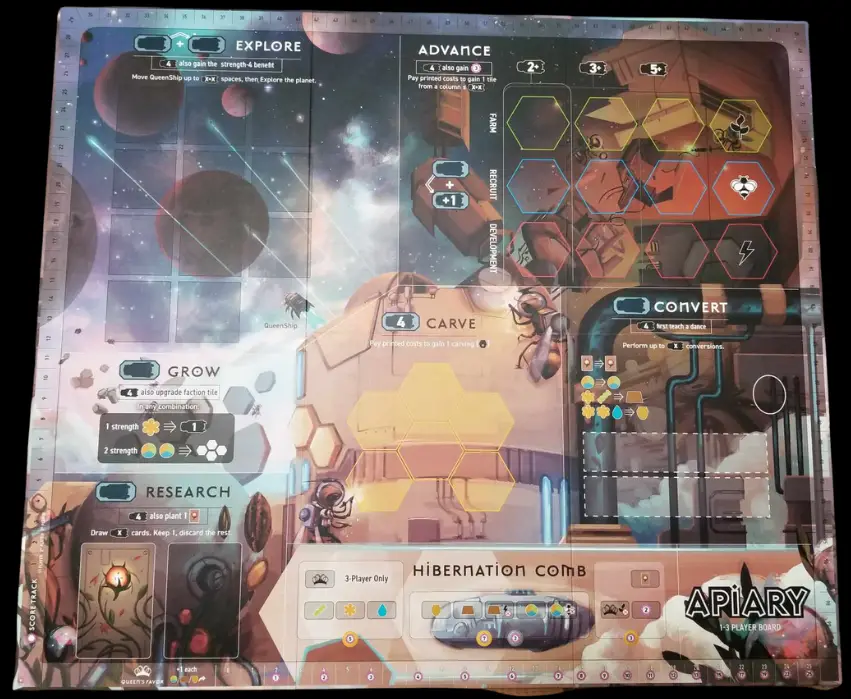
The Flow of the Game
I’ve seen some comments that the game ends both a bit too quickly and a bit too late. When people make these comments I think they are forgetting that this game has a clock which the players control. If someone is hibernating workers at an accelerated rate, that person will end the game before you may be ready for it and your build will feel incomplete.
If the game feels like it’s dragging on too long, people aren’t upgrading or recouping their workers fast enough and the game gets bloated or stalled out and it may overstay its welcome. This probably happens the most frequently at two players which is the fewest amount of players stirring the pot and keeping things going. I have not yet played any games with three or more players so I can’t speak to that yet.
Ending too fast or too slow isn’t necessarily all the game’s fault. A lot of it boils down to the actions taken by the people at the table but there may be combinations of tiles and cards that just create a slow game state from the word go. Even with some slow play, the game will eventually force an ending when the Hibernation Comb is filled or someone runs out of hibernation tokens.
Are Apiary Factions Balanced?
In my experience thus far, there doesn’t appear to be any glaring faction imbalances in Apiary. I’ve played seven times and we used different factions each time. Neither my opponent nor myself have had what felt like an overpowered or underpowered faction ability that decided the game.
It is possible that after a high number of plays imbalances will become more obvious. If I find any of these imbalances in the future, I will update this review accordingly.
Are Apiary Seed Cards Balanced?
Seed cards can sometimes feel unbalanced. They can decide a winner in a flurry of plays at the end of the game, such as collecting two incomes from farms (green tiles) either on your board or farms on the public board that haven’t been built by a player yet. Many Farm tiles have incomes resulting in straight victory points or Queen’s Favor (bonus end-game victory points determined by your position on a special track), so these Farms tend to be prime targets for end-game income collection.
It’s been my experience that player scores tend to hover within five points of each other unless someone pulled together a good combo. This is certainly within striking distance of a lucky card draw producing a lot of end-game points.
You are allowed to play any and all seed cards you have in your hand on each of your turns. Either before or after you take your action. This allows you to save up your cards for just the right moment and power out points that your opponent doesn’t have an answer for and this can feel like you are stealing a game.
Furthermore, seed cards you don’t want can be discarded for basic resources at a one-to-one conversion, so dead cards are never truly worthless. Resources you can’t store are converted into Queen’s Favor at the end of your turn, so you can essentially discard your cards for Queen’s Favor. This resource conversion also gives you a way to ignore the EXPLORE action a bit in order to dig for powerful effects while also pulling together basic resources to buy a Farm or Recruit you have your eye on.
While digging, you can even bump your own workers, increasing their strength in the process. If you place a strength four worker on RESEARCH, you can “plant” a card from hand for end-game victory points, as described at the bottom of the card.
It feels like there should be some kind of limit on how many seed cards you can play from your hand each turn. It also feels like there should be a limit on how many cards you can discard for resources each turn. In practice, when someone starts dumping a bunch of cards, it feels like there is something wrong with the game. I’m not sure if this feeling will go away with more plays and it’s something I will definitely keep my eye on.
Are Apiary Farm, Recruit, Development Tiles Balanced?
There are certain tiles that feel both underpowered and overpowered in practice. I had a game where I secured an early Pathfinder (recruit blue tile) which allowed me to reap huge benefits from the EXPLORE action. It lets you collect an explore token twice. Not only was I getting normal resources, but I also got to collect double explore tokens.
This was incredibly powerful since there were multiple seed card and victory point tokens up for grabs. The cherry on top was that excess resources that I couldn’t store converted into Queen’s Favor (end game points) at the end of my turn. I even managed to draw a card that allowed me to gain any explore token on the board which was doubled thanks to Pathfinder.
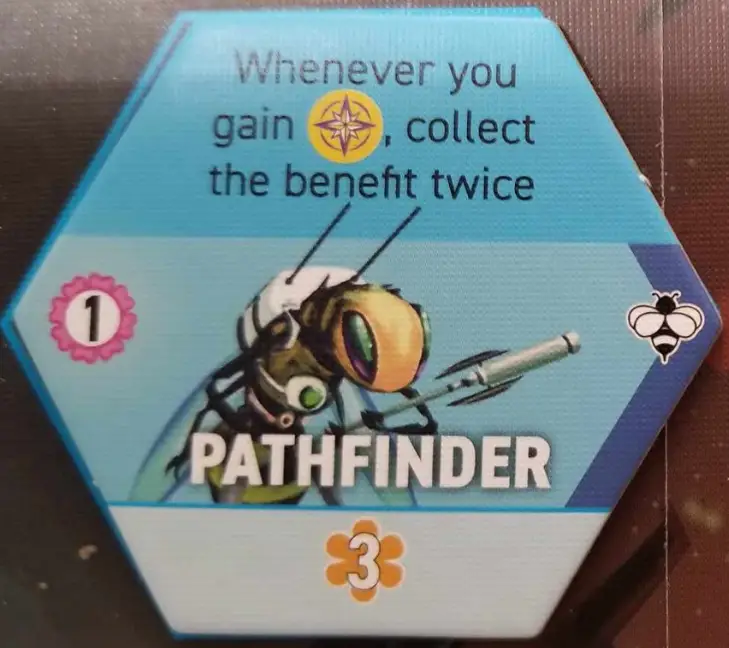
Deputy is another Recruit tile that feels really strong. It allows you to buy any tile available regardless of your worker’s strength. This acts as a form of early game acceleration that empowers even your strength one workers to buy tiles reserved for strength five worker placements.
This feels like too much power but more plays will eventually reveal how powerful this ability actually is. As someone who really enjoys the hive-building and tile placement aspect of Apiary, I always want to secure Deputy when it pops up.
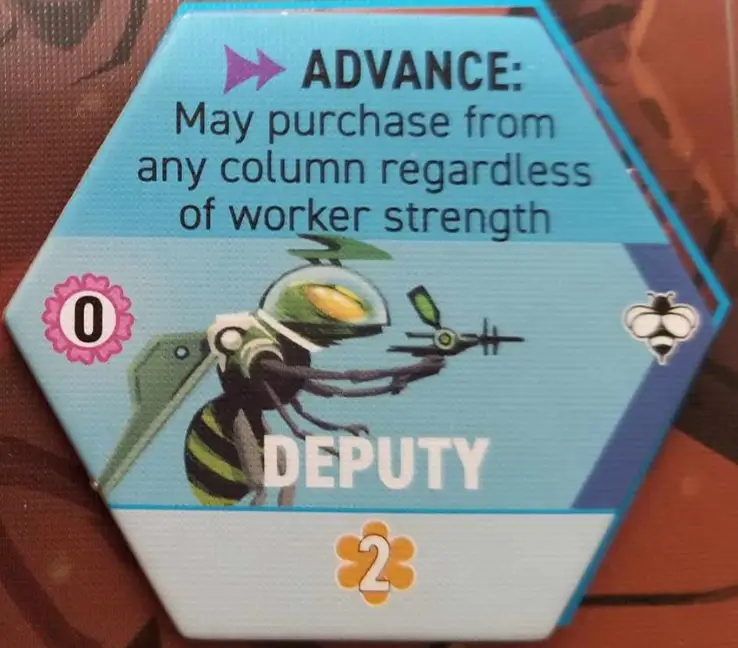
Farm tiles with resources as income feel underpowered. I have not yet played a game where I want resource income from my farms. I always seem to want victory points first and Queen’s Favor second when I’m building farms.
I’m not often pressured for storage but that can be a concern if you are trying to store up wax or honey for Development or Carve builds. There are seed plants and Carve tiles that reward you for resources at the end of the game so if you wind up going down that road, then extra storage from Farm tiles would be more valuable.
Are Apiary Hive Mats Balanced?
I’ve played with all of the five hive mats available and none of them seemed unbalanced. I find them to be consistently interesting and they help steer your game along a certain theme. It is possible that after a high number of play imbalances will become more obvious. If I find any of these imbalances in the future, I will update this review accordingly.
The Components of Apiary
The artwork and component quality are great, which is something I’ve come to expect from Stonemaier Games. The cover art on the box really catches your eye and makes you wonder what the game is all about.
The rule books and player aids are well-written and easy to understand. The Appendix is especially handy and is something I reference often. The rule books have a nice textured finish, much like Wingspan rule books.
The game is very nice to look at which enhances the experience. I like the color pallet on the various tiles, it all ties together during play. Light green, light blue, salmon pink, and honey yellow all blend well together on the board.
Watching the preview material, I was concerned that the workers looked dirty and undesirable due to the “wash” they used so you could read them better. In practice I don’t take notice of this and find the workers easy to read, so it looks like they achieved what they were shooting for there. If you scrutinize them in your hand, they do look like dirty wax but this is actually in alignment with the theme of the game which ends up being pretty clever in my opinion.
The deck of seed cards is unassuming and lacks some pizzazz but this isn’t a big deal and it’s not something I notice while playing. The cards are the same size and made from the same stock as Wingspan cards so they work with the premium sleeves I have for that game, which I appreciated.
The insert is surprisingly well done. I especially like the small removable tray for the resource tokens. I’ve never seen this done before. I don’t even need to make special considerations for my sleeved cards, I just moved some things around and found a more suitable spot for them.
Since I don’t usually play games with three or more players, I stored the extra workers and hibernation tokens in a general storage box and that gave me a bit of extra room to work with in the Apiary box.
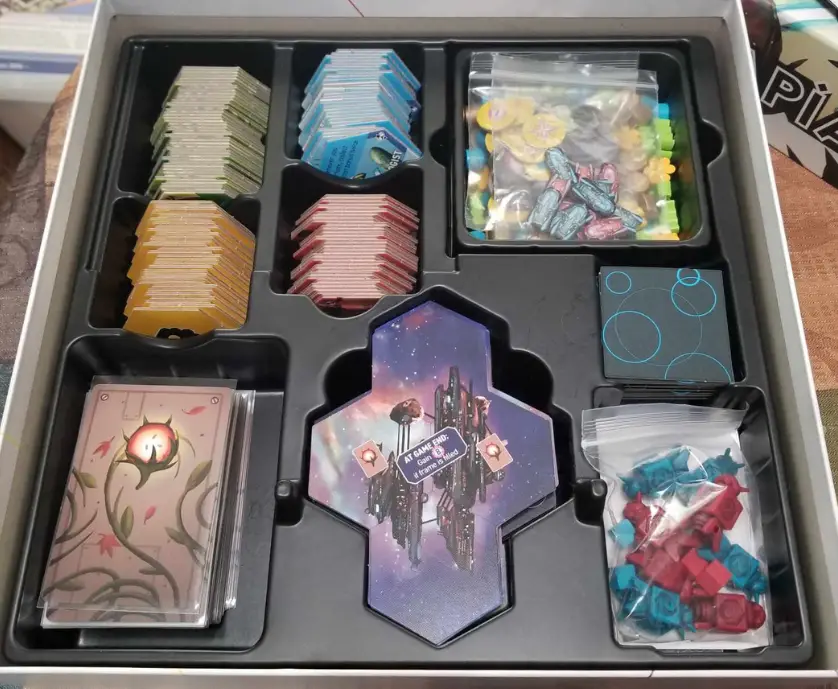
The one component that is in stark contrast to the rest of the game is the drab Queen’s Ship miniature. It’s a light grey color and is rather unexciting to look at. Online I’ve seen several examples of painted ships and I think that’s a pretty cool option for people. I’m not a miniatures painter myself and I don’t expect that I will ever do this.
Apiary’s Queen Ship Miniature Seems To Have Issues
Apiary’s Queen’s Ship miniature comes with a clear plastic stand that is supposed to be inserted into a hole on the underside of the ship. On my miniature, the hole seems to be too big for the stand and it doesn’t actually hold together. I’ve seen several other people report this online as well.
Stonemaier Games’ FAQ for Apiary addresses this issue:
This is an issue that came to our attention during Essen Spiel; previously we had not experienced in testing the pre-production and mass-production copies of the game. It is not ideal, but fortunately, there are multiple workarounds:
- Push the rod less than gently into the QueenShip (our manufacturer indicates that this should solve the problem in most copies).
- Glue the rod into the QueenShip; there’s never a need to separate the two.
- Add a strip of scotch tape around the end of the rod to add just a little thickness.
- Move the QueenShip by the rod instead of the miniature.
- Ignore the rod and just use the QueenShip.
In my opinion, this doesn’t really matter. The mini works just fine without the stand and if the game didn’t include it, I wouldn’t have been able to tell that anything was missing. The ship sits just fine on the board without its stand and is perfectly balanced.
In fact, I might have been tempted to remove the stand anyway because the mini is top-heavy and I’m always moving it around to see what the planet tile says underneath it. I am not using the stand currently and it’s working just fine.
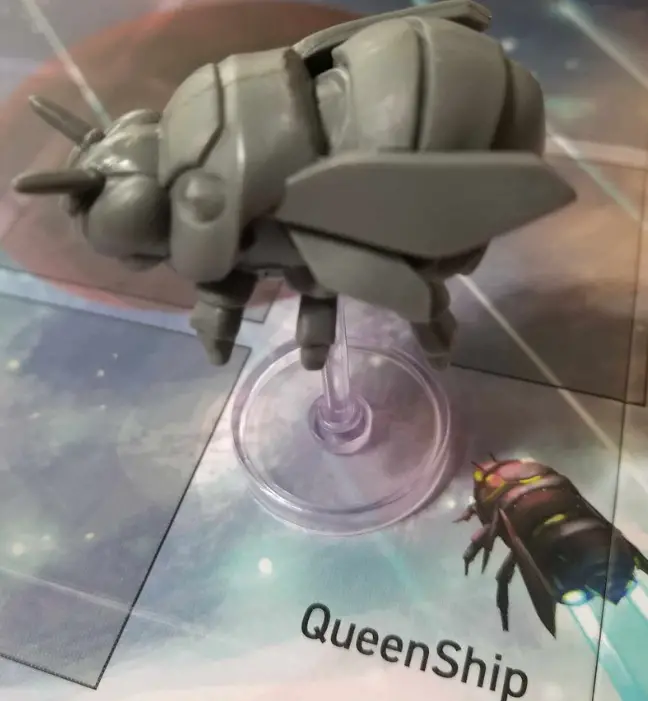
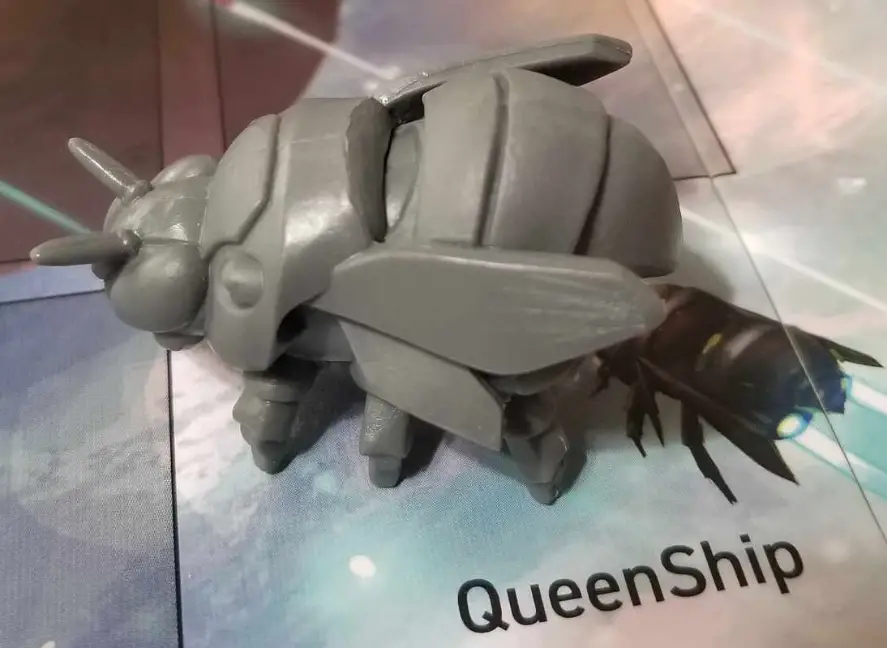
The Cost of Apiary
The cost of Apiary may be a bit steep for some people. Apirary is listed for $75.00 USD (as of this writing it is on sale for $69.00). As usual, people with a Stonemaier Champion membership will see a 20% reduction in the cost of any games purchased from them.
I’m not a business expert and I understand that the current state of the world is making things more expensive, but $75.00 does feel like it is a bit expensive for what you actually get. That’s my gut reaction without thinking about it too hard.
I can see where they may have made some cost-cutting efforts in the final version of the game, such as with the unpainted Queen’s Ship miniature and the low number of hive mats and Dance tiles, which both feel underrepresented in practice.
I can’t help but think that they may have been able to reduce the cost further by omitting the stand for the Queen’s Ship and perhaps the Automa solo mode. Including solo play is part of Stonemaier’s overall design philosophy but as someone who very rarely plays solo in any games, I would not miss the Automa if it wasn’t there. I can’t imagine that the amount of people who play solo regularly is large enough to justify the inclusion of solo modes in every game produced and subsequently increasing production costs as a result.
There may have been further opportunities for cost-cutting by reducing the total number of factions in the core game. Twenty factions is a lot but I do appreciate that so many are available.
The inclusion of so many factions in the core game does steal some thunder from a potential expansion in the future. I do recall a statement made by Jamey Stegmaier in an interview that they included every faction idea that they had during the development of the game.
It should also be noted that during development, they realized that it was hard to see the numbers on the workers during play so they decided to add that dark wash, which was done at a significant cost. This was stated by Jamey during one of his Facebook Livecasts.
Finally, there is a teaching guide card and five player index cards which cover much of the game’s iconography, what you can do on your turn, and how to tally up points at the end of the game. I have not utilized any of these materials.
They are certainly nice, but I learned the game and taught it to my wife using only the rulebook and the appendix. Eliminating these cards may have been another opportunity to cut costs.
Final Thoughts on Apiary
Apiary is a fun game that has introduced me to some new mechanics that I haven’t experienced before. I think they are implemented well and this game helps take off some of the sharp edges of worker placement that have bothered me in the past. I look forward to playing it again and I keep asking my wife if she would like to play another game.
After reviewing Stonemaier’s Guiding Principles and Tenets of Board Game Design for this review, it became clear to me that Apiary does a really good job of meeting all of those criteria. The game does what Stonemaier says they want to do with their games. I think the teaching guide and player aid cards are good quality-of-life improvements for less experienced board gamers and help to make Apiary a bit less intimidating for people who may not play a lot of modern board games.
At the current price point, I would recommend playing the game first if at all possible if you aren’t sure whether you would like it or not. If you have a shelf full of worker placement games, I’m not sure Apiary will bring something to the table that you haven’t already experienced before.
My experience with worker placement games includes Lords of Waterdeep (which I own), Champions of Midgard (own), Viticulture Essential Edition (I don’t currently own), and Apiary. I can say that among those games, Apiary is fun, unique, and justifies a spot in my modest collection.
Thank you for reading our Apiary board game review. Be sure to check out our Wingspan board game review for our thoughts on another great game from Stonemaier Games.
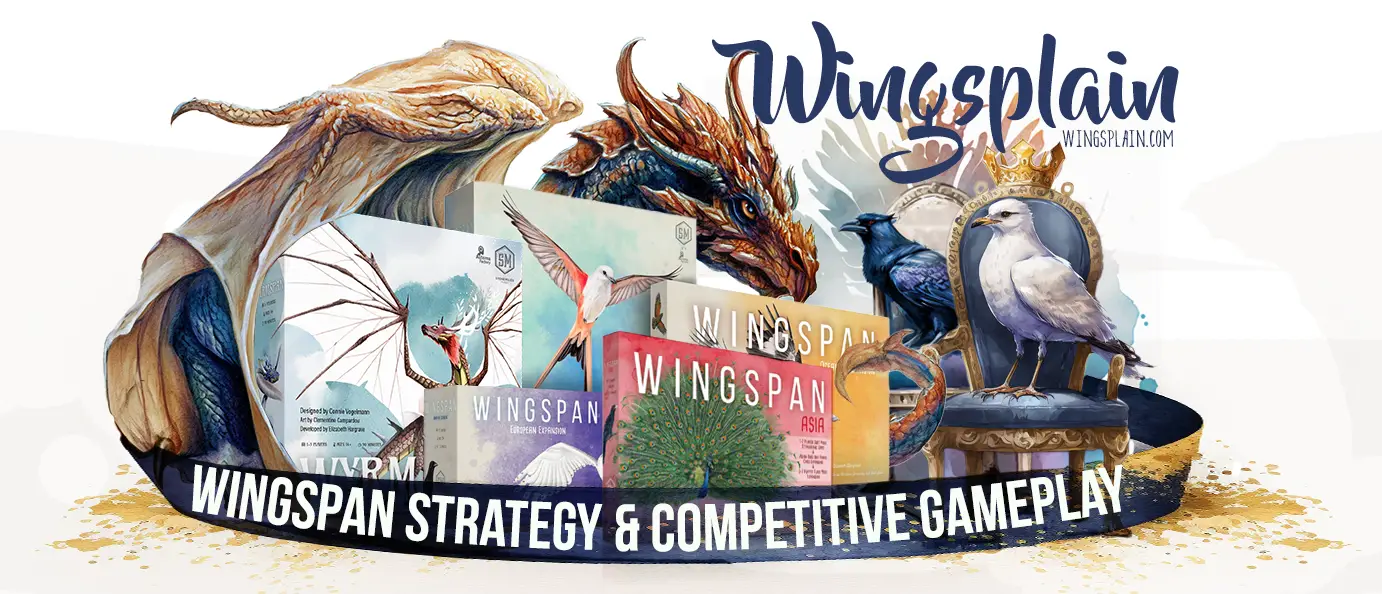



Thanks for a thorough review! I just ordered a copy through my LFGS and expect my copy one day next week. Your review has given me more food for thought and upped my anticipation.
Thanks for checking out the review Jeff. I hope you have fun with Apiary like I have.